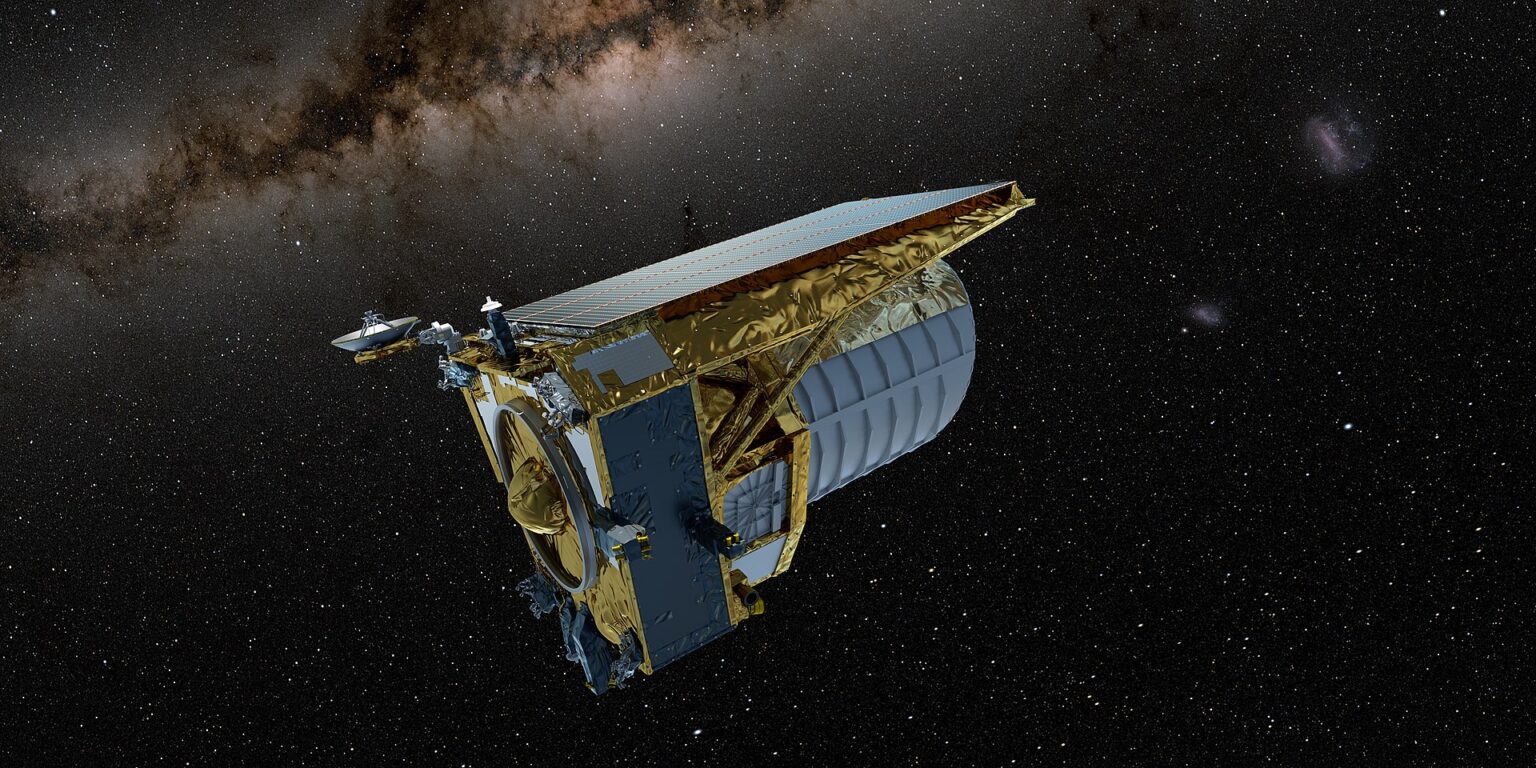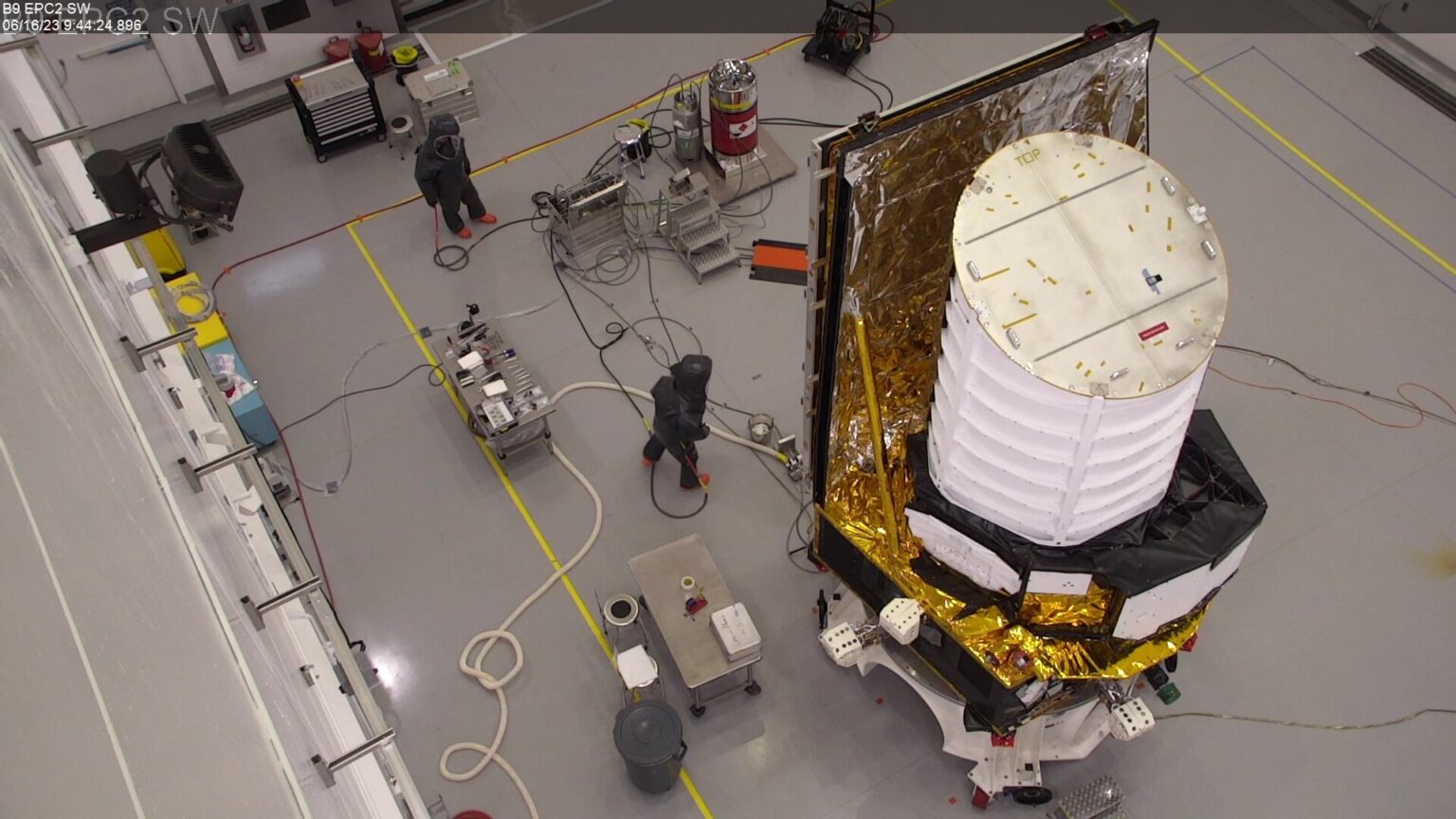The European Space Agency has announced the launch date for the Euclid telescope. It will embark on its space journey on July 1.
Technical specifications and objectives of the Euclid telescope
The Euclid telescope was developed as part of the ESA Cosmic Vision scientific program. It has a length of 4.5 m, a width of 3.1 m, and a total mass of 2.1 tons. The construction of Euclid cost ESA approximately 500 million euros (excluding launch expenses).

Euclid is designed to study the history of the universe’s expansion, the formation of its large-scale structures, and the distribution of mysterious dark matter and dark energy. To achieve this, it will perform high-precision measurements of the redshifts of distant galaxies (within a radius of up to 10 billion light-years from the Milky Way). The refined data on the relationship between redshift and distance will help astronomers better understand how the universe acquired its current appearance.
To accomplish its goals, Euclid is equipped with a 1.2-meter mirror. The scientific payload of the telescope consists of two instruments: the visible imager (VIS) and the near-infrared spectrometer and photometer (NISP).
Euclid Launch Date
Initially, the launch of Euclid was planned for 2020. However, as is often the case in space exploration, this date was postponed several times. First, due to a combination of technical issues and the impact of the COVID-19 pandemic, and then due to a rupture in ESA’s relations with Roscosmos. The plan was to launch Euclid using a Soyuz rocket from the Kourou spaceport in French Guiana. After the start of Russia’s large-scale invasion of Ukraine, this became impossible, of course.

As a result, ESA had to turn to SpaceX for assistance. The new carrier for the telescope became the Falcon 9 rocket. In the spring of 2023, Euclid was delivered to the Kennedy Space Center, where it was prepared for launch. One of the final procedures was refueling. Euclid was filled with 140 kg of hydrazine (to be used for major maneuvers) and 70 kg of nitrogen (needed for minor corrections).
Currently, the launch of Euclid is scheduled for July 1. The backup launch window will be open on July 2. After reaching orbit, the telescope will perform a series of maneuvers that will position it near the L2 Lagrange point of the Sun-Earth system, located 1.5 million km from our planet in the anti-sunward direction. The scientific mission of the telescope is planned for six years, with the possibility of extension.
Source: ESA
